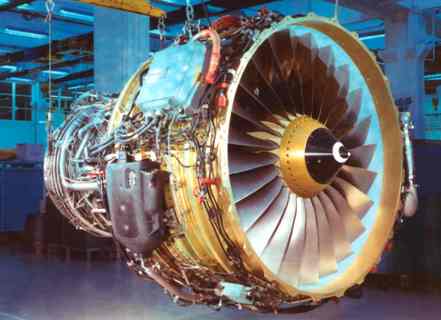
| This category is sponsored by |
|---|
5. Rolls-Royce Merlin
Aero engines rarely gather to themselves a glamorous image, but the Rolls-Royce Merlin was an exception to the rule. Admittedly, it was its association with the ultra-glamorous Supermarine Spitfire in 1940 that helped it stake out this reputation, but even today, its distinctive note at airshows can make elderly ex-pilots grow misty-eyed.

The Merlin appeared after it became apparent in the early 1930s that the earlier Kestrel was approaching the limit of its development.
The Merlin, initially designated PV12 for Private Venture, as it was funded from the company’s internal resources, grew immensely in importance in the middle of the decade when its promise of low frontal area, compactness and high power output saw it chosen as the powerplant for both the Spitfire and Hawker Hurricane. The 1,030hp (770kW) Merlin II appeared in 1938.
A 12-cylinder, 60-degree ‘upright Vee’ liquid-cooled powerplant, the Merlin proved to have great development potential. The 1,175 hp (876 kW) Merlin XII appeared on the production lines as the Spitfire Mark II was introduced in June 1940; eventually the Merlin 130 would reach 2,030hp.
The engine’s qualities were acknowledged by its choice as powerplant for other iconic aircraft such as the Avro Lancaster and de Havilland Mosquito. Built under licence in the US by Packard it gained another lease of life when it replaced the Allison V-1710 in the North American Mustang.
The Merlin transformed both the performance and the role of the Mustang. From a low-level army co-operation fighter, it became the long-range, high-altitude escort fighter par excellence, accompanying US bomber formations deep into enemy-occupied Europe and holding its own against both Me109s and FW190s.
In all, more than 168,000 Merlins were built.
7. CFM56
The largest-selling jet engine of all time. One of the secrets of its success lies in the fact that it is in fact a family of engines, whose varying thrust levels and fan sizes make it readily applicable to a wide range of aircraft types.
 |
|---|
© CFM International |
Members of the CFM56 family power both the Airbus A320 and Boeing 737, as well as the A340 and many re-engined variants of the USAir Force’s C-135 family.
The CFM56 family is based around a single-stage high-pressure turbine that targets longevity, low weight, and cost. The latest stage in a continuous development programme will soon result in all new CFM56s being as much as 25% below the 2008 CAEP6 requirement for NOx emissions.
9. Rolls-Royce Trent
The Trent evolved from Rolls-Royce’s RB.211, the engine that bankrupted the company in 1971. The Trent family looked as though it, too, could be a corporate disaster when its development costs kept rising in the severe recession of the early 1990s.
 |
|---|
© Rolls-RoyceR-R's Trent 800 |
Much of the credit for persevering with what became a highly-successful programme rests with then-chairman Sir Ralph Robins, who drove through the programme when other members of the board favoured curbing the development costs.
Members of the Trent family have been chosen as the launch engines for the Airbus A350 and A380, plus the Boeing 787, and also power the A330, A340 and Boeing 777.
14. General Electric GE 90
The world’s most powerful aero-engine. Designed for the Boeing 777, the GE90 has a 10-stage high pressure compressor, was the first production engine to feature composite fan blades and develops a pressure ratio of 23:1, an industry record.
It is also the world’s largest engine in physical terms, with the -115B fan diameter measuring 3.25m (128in) – wider than the fuselage of early-model Boeing 737s.
The GE90 was initially certified at 84,700lbs (377kN). The latest GE90-115B produces 513kN of thrust and has been run for an hour under test conditions at 569kN. The engine’s swept, wide-chord fan blades achieve a higher air flow through the engine and produce more power, with lower fuel consumption.
21. Pratt & Whitney PT6
The ubiquitous PT6 has become the most popular turbine engine in history, appearing on innumerable executive, general aviation, regional and agricultural aircraft. Some variants are optimised for helicopter use.
Production of the PT6 by Pratt & Whitney Canada began in 1963, with the first platform for the powerplant the then-new Beech King Air 90 turboprop.
The engine has dominated its sector of the world market for years. The PT6 family splits in two, with the PT6 Small delivering outputs ranging from 580 to 920shp and the PT6 Large from 1,090 to 1,940shp.
New aerodynamic and material technologies have enabled the engine to gain more power without any significant increase in size while these and other innovations have reduced emissions and increased maintenance intervals. The PT6 family has accumulated more than 330 million flight hours.

100 Greatest
Top 10 | 11-20 | 21-50 | 51-100
Top 5s
Civil Aircraft | Military Aircraft | Person | Moment | Engine
Through the decades
Civil Aircraft | Military Aircraft | Person | Moment | Engine
Source: FlightGlobal.com



















